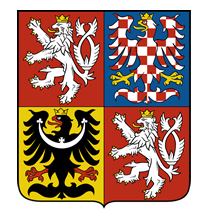Czechia: Government
Key Figures
- Chief of State:
- President Petr Pavel
- Head of Government:
- Prime Minister Petr Fiala
Overview
- Government Name:
- Czechia
- Constitution:
- Adopted: 1992; Dictates the main powers of the executive, legislative, and judicial branches. Also detailed are the Supreme Control Office, the Czech National Bank, and Territorial Self-Government.
- Government Type:
- Parliamentary Democracy

Index of Economic Freedom
Country Risk Rating
Government Branches
| Main Powers | Election Process | Election Cycle 1 | |
|---|---|---|---|
| Executive | The president is the head of state who has the power to appoint and recall the prime minister, sign enacted laws, negotiate and ratify international treaties, and be the commander in chief of the armed forces. The prime minister is the head of government, exercising supreme executive power, including the right to set the agenda for most foreign and domestic policy, mobilize the parliamentary majority, and choose governmental ministers. |
The president is elected by the majority vote through a two-round system. The prime minister is appointed by the president. |
5 years, limited to 2 consecutive terms |
| Judicial | The supreme court is the highest court of appeals. |
Supreme court judges are proposed by the chamber of deputies and appointed by the president. |
Life appointment |
| Legislative | The parliament holds and passes bills, has the right to modify the constitution, ratifies international agreements, declares war, approves presence of foreign military forces in Czechia, and dispatches of Czech military forces abroad. |
The senate has 81 members elected by absolute majority vote in single-member constituencies. The chamber of deputies has 200 members elected through a flexible-list proportional representation system. |
Senate: 6 years; Chamber of Deputies: 4 years |
Regional Trade Blocs
International Organization Participation [2]
Environmental Agreements [3]
Tax Information [2]
- Tax Authority:
- Ministry of Finance
- Tax Name:
- VAT
Sources:
- ElectionGuide http://www.electionguide.org/
- EY, http://www.ey.com
- CIA World Factbook, https://www.cia.gov/the-world-factbook/
- U.S. Bilateral Relations Fact Sheets http://www.state.gov/r/pa/ei/bgn/


